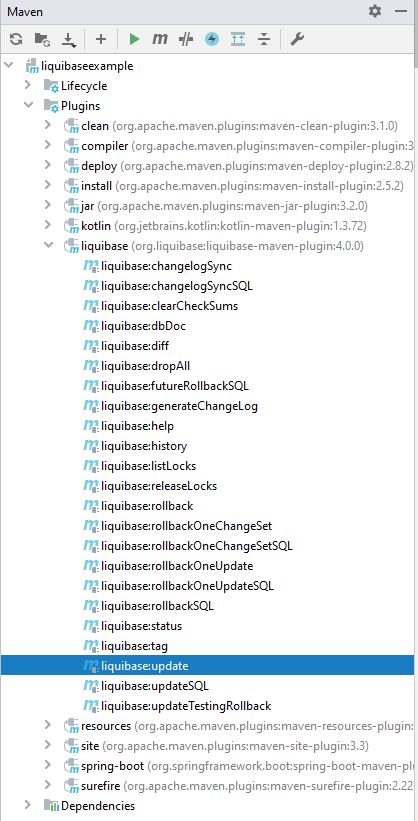Overview
Sometimes you need to track changes in a database.
Hopefully, there is exist an open-source and free solution to the problem.
The solution is called liquibase.
How to add liquibase
Firstly, add an 1.sql file to the resources/liquibase/changelog folder with the following content:
1
2
3
4
--liquibase formatted sql
--changeset author:id logicalFilePath:path-independent splitStatements:false rollbackSplitStatements:false stripComments:false
PUT_SQL_CODE_HERE
Don’t forget to change PUT_SQL_CODE_HERE and author:id.
Secondly, add a changelog-master.xml file to the resources/liquibase folder with the following content:
1
2
3
4
5
6
7
8
9
<?xml version="1.0" encoding="UTF-8"?>
<databaseChangeLog
xmlns="http://www.liquibase.org/xml/ns/dbchangelog"
xmlns:xsi="http://www.w3.org/2001/XMLSchema-instance"
xsi:schemaLocation="http://www.liquibase.org/xml/ns/dbchangelog
http://www.liquibase.org/xml/ns/dbchangelog/dbchangelog-3.1.xsd">
<include file="changelog/1.sql" relativeToChangelogFile="true"/>
</databaseChangeLog>
Thirdly, add a init.sql file with a schema initialization script, because liquibase can’t init schema since it requires additional tables to store information beforehand.
In the end, your liquibase project layout should look like this below:
1
2
3
resources/liquibase/changelog/1.sql - a .sql file
resources/liquibase/changelog-master.xml - it includes a path to a .sql file
resources/liquibase/init.sql - a .sql file with a schema initialization script
How to add liquibase-maven plugin
Firstly, add a liquibase.properties file to the resources/liquibase folder with the following content:
1
2
3
4
5
changeLogFile: src/main/resources/liquibase/changelog-master.xml
driver: org.postgresql.Driver
url: jdbc:postgresql://localhost:5432/postgres?currentSchema=MY_SCHEMA_NAME
username: postgres
password: postgres
You may change it according to your database setting.
You could read more about how to configure liquibase.properties file here.
Secondly, add the following code below to the pom.xml to enable liquibase-maven plugin:
1
2
3
4
5
6
7
8
9
10
11
12
13
14
15
16
17
18
19
20
21
<build>
<plugins>
<plugin>
<groupId>org.liquibase</groupId>
<artifactId>liquibase-maven-plugin</artifactId>
<version>...</version>
<configuration>
<propertyFile>src/main/resources/liquibase/liquibase.properties</propertyFile>
<promptOnNonLocalDatabase>false</promptOnNonLocalDatabase>
</configuration>
<executions>
<execution>
<phase>process-resources</phase>
<goals>
<goal>update</goal>
</goals>
</execution>
</executions>
</plugin>
</plugins>
</build>
Don’t forget to replace … with the actual version number.
How to update a database with liquibase-maven plugin
If you want to update a database simply execute liquibase maven plugin update goal.
You could checkout the picture below:

Conclusion
We have discussed how to add liquibase and liquibase-maven plugin to the existing project.
You could read more information about how to use liquibase here, my liquibase tips and checkout how to write SQL format rollback code.
We also have discussed how to update a database with liquibase-maven plugin.
You could check out the source code here as well.
-
Previous
Xamarin Forms no resource found that matches the given name error -
Next
Liquibase SQL format. Statement and rollback example